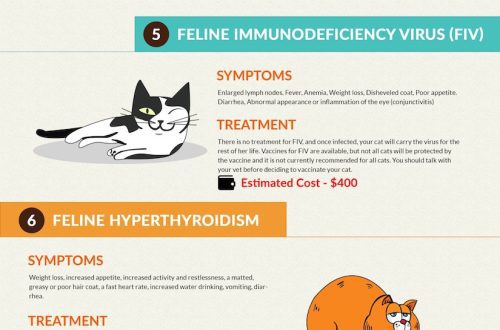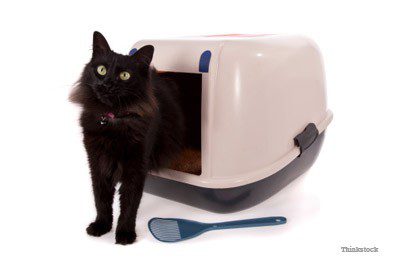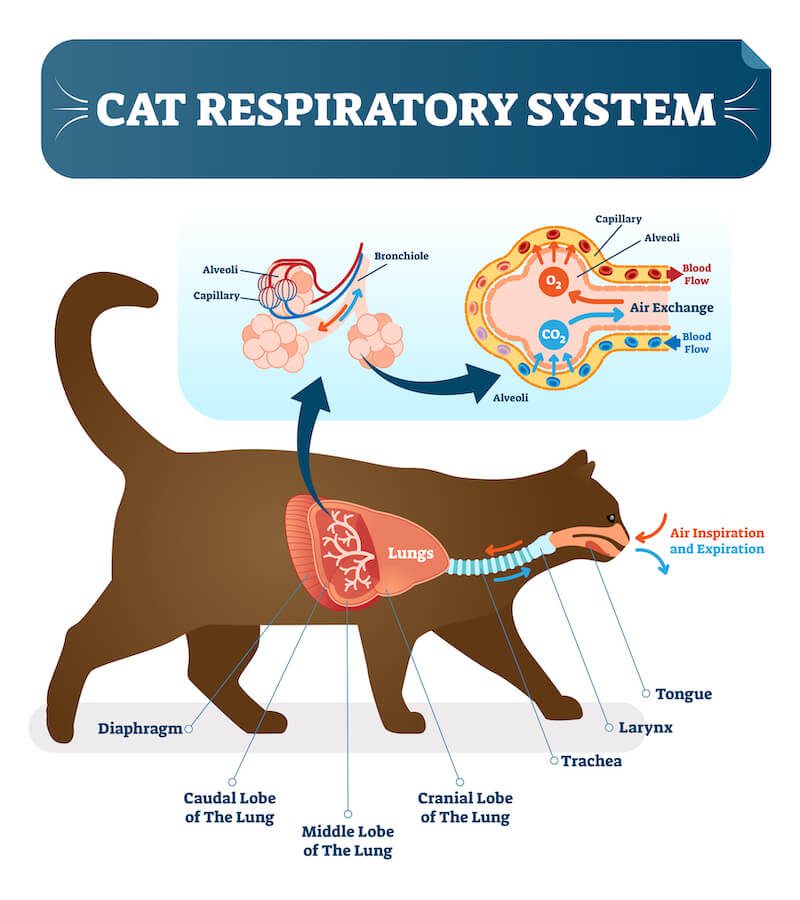
asthma in cats
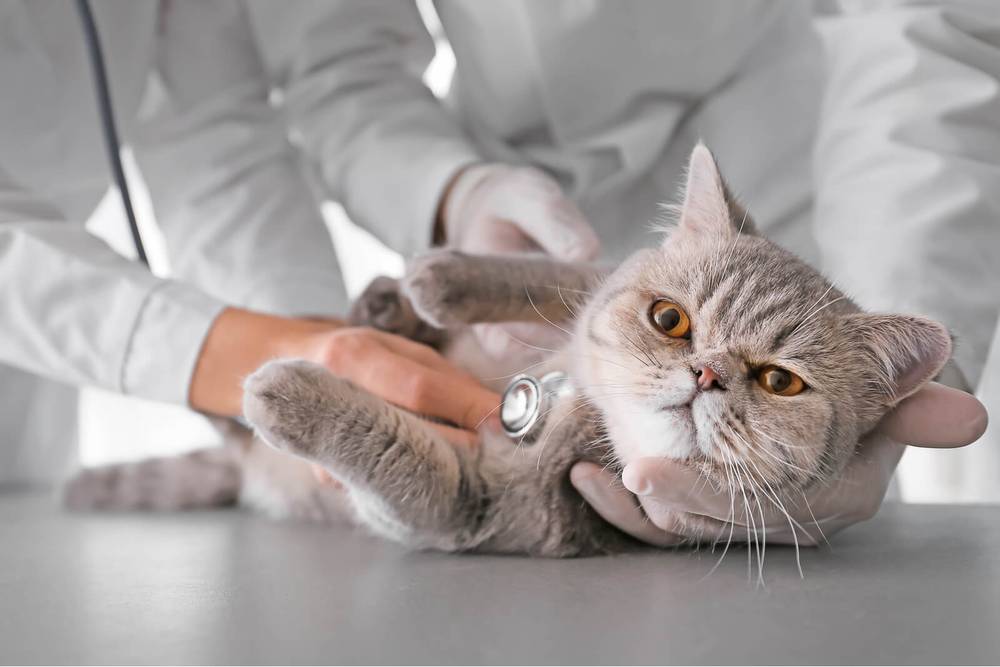
Bronchial asthma in cats has a peculiarity – intolerance to various irritants (with normal perception of harmless substances). On all continents, asthma is recorded annually in approximately 1% of pets of various ages and breeds.
Veterinarians note that bronchial asthma in cats is the root cause of symptoms of coughing and difficulty breathing, which requires special treatment. The reasons for the development of pathology are not fully understood. But there are factors that most often play the role of pathogens. For example, genetics may be the cause: Siamese and Himalayan breeds have been observed to be the most prone to asthma. Most often, the disease manifests itself as a result of contact of the pet with allergens. The nature of allergens is different, they can be infectious or non-infectious, mechanical or chemical, physical and even meteorological – the cat’s body reacts to changes in pressure or humidity in the atmosphere. If the allergen is seasonal, your cat will develop asthma at that time of the year. Unfortunately, it also happens that it is extremely difficult to calculate the provocateur of a pet’s disease. In this case, symptomatic treatment is used by veterinarians. It is important for owners to understand the signs of asthma in a cat in order to start therapy on time.
Contents
Asthma Symptoms in Cats
Asthma in its early stages is not easy to diagnose because the symptoms are mild. The first clinical manifestations of asthma in a cat are attacks and labored or rapid breathing, accompanied by noticeable fatigue. Since these manifestations are similar to signs of an infectious or cardiac pathology, the veterinarian must conduct an examination in order to correctly diagnose the disease.
Feline asthma can begin with rare and short attacks. At this stage of development, it is easy to confuse it with an attempt to regurgitate food or wool. The pet takes a characteristic posture in a sitting position: the paws are bent, the neck is extended and tilted to the floor. Most often, the owner begins to worry, noticing the relationship between posture and coughing with more frequent attacks and markedly increased fatigue of the cat.

An acute attack begins with sudden choking, accompanied by a dry cough with wheezing or whistling sounds. Later, drowsiness, apathy, loss of appetite are added to the main symptoms. If the condition worsens, the pet may suddenly lie on its stomach with its mouth open, breathing heavily. His mucous membranes become bluish due to lack of oxygen. He is apathetic and unresponsive to the owner. As such symptoms increase and the severity of the condition, there is a real threat to the life of the pet. The correct way out is to immediately call for urgent veterinary care. If you do not pay attention to alarming symptoms and do not take emergency measures, death from suffocation may occur.
Diagnosis of the disease
If you have problems with breathing, coughing, without waiting for attacks or other complications, you should contact a veterinary clinic to identify the source of feline asthma. Based on the research and the clinical picture, the veterinarian will be able to distinguish feline asthma from other diseases and pathologies of the respiratory system, which can occur with similar symptoms. Diagnosis is based on the history of the disease, a description of the signs of asthma in a cat or a cat, examination and listening, additional tests and studies. Video recording of seizures will not be superfluous to visualize the state at a critical moment.
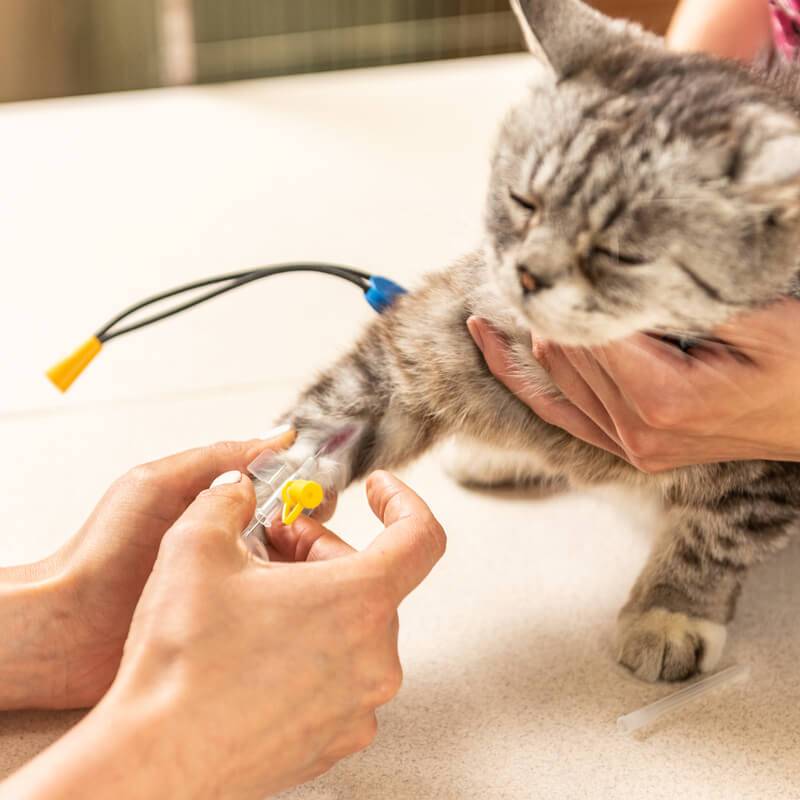
Allergens can provoke asthma:
- parasitic invasions;
- chronic infections;
- cat litter;
- feed;
- microscopic fungi, mold, pollen;
- dust, dust mites;
- smoke and other negative environmental conditions;
- household chemicals, plastic with a pungent odor, paints;
- perfume.
In modern veterinary medicine, various methods of diagnosing the disease are used. Clinical and biochemical blood tests will help diagnose a likely inflammatory process. In asthma, an increase in the concentration of eosinophils is allowed. The results provide comprehensive information on the state of the blood, indicate deviations.
A chest x-ray is the most revealing method for diagnosing diseases of the respiratory system. In cats with asthma, characteristic changes occur – the transformation of the bronchial and pulmonary pattern, which will be clearly visible on the x-ray, which will facilitate the diagnosis. The X-ray method allows you to diagnose the condition of the pet’s respiratory organs: trachea, bronchi, lung tissue, as well as the size of the heart and the condition of the pulmonary vessels.
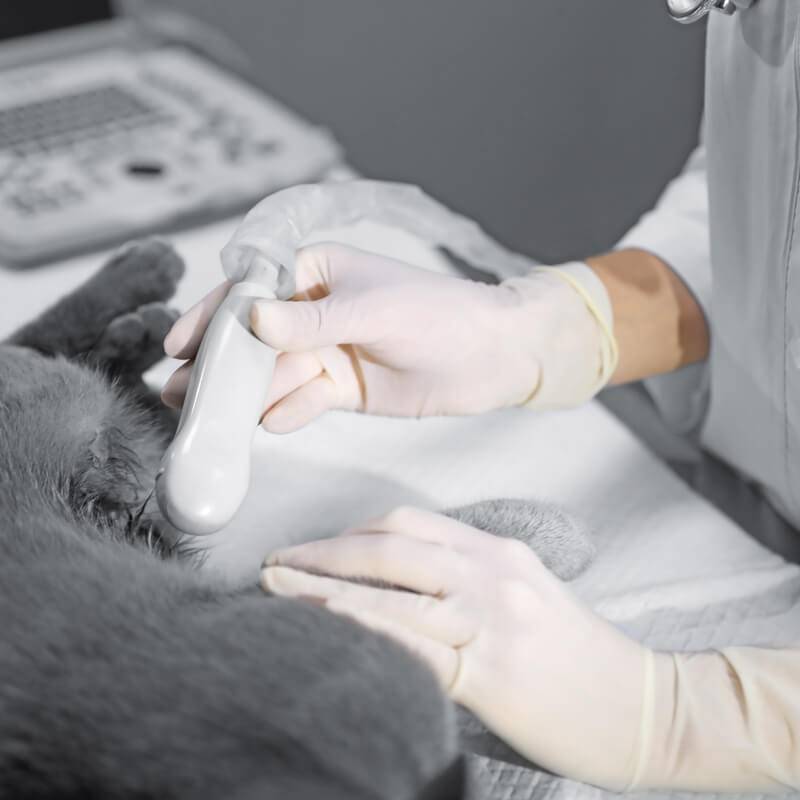
Bronchoscopy is an endoscopic method for examining the airways. The study is performed under full anesthesia. The respiratory system is examined with an endoscope. During the examination, the veterinarian assesses the state of the internal structure of the bronchi, trachea, and the state of the pet’s mucosa. During bronchoscopy, bronchoalveolar lavage is performed – flushing from the surface of the smallest bronchi, followed by laboratory analysis of the material. This method reveals pathogens, violations of the structure of the bronchi and trachea, signs of oncological tissue changes. Lavage is the most informative in the diagnosis of chronic lung diseases and belongs to the expert, but if the study did not reveal the cause, based on the results of the data obtained, assumptions can be made that will help to establish an accurate diagnosis in the future.
Asthma Treatment in Cats
Even if the diagnosis of bronchial asthma in a cat or cat is confirmed, you should not despair. Modern methods of veterinary medicine allow at least controlling asthmatic attacks, and at the maximum achieving a stable remission of the disease.
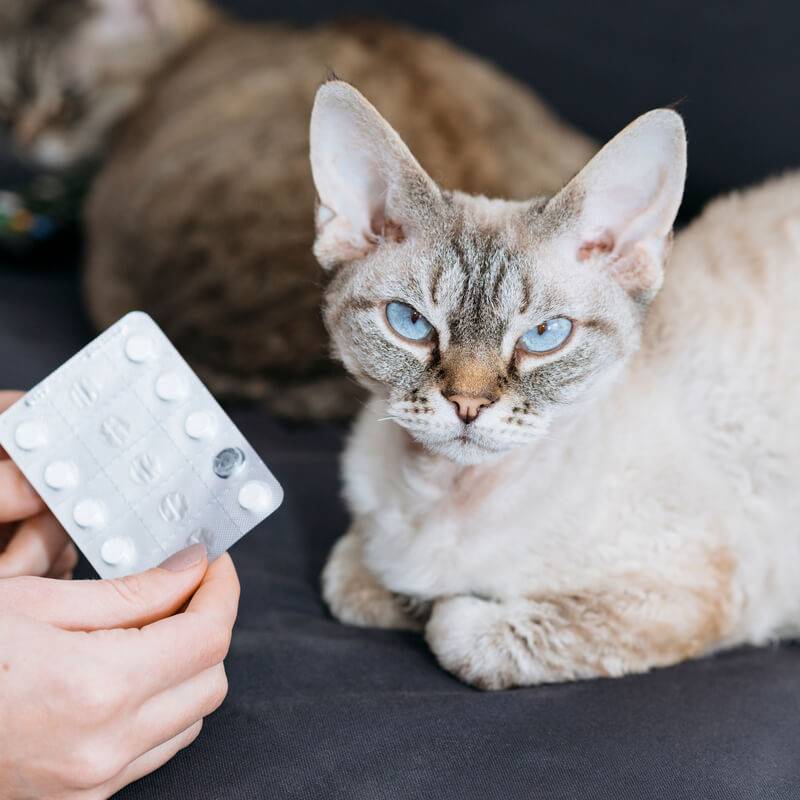
The task is to identify provoking allergens. The veterinarian has proven methods to determine possible sources, but the owner should first discuss the clinical manifestations and details of the content with the veterinarian:
- analysis of the seasonality of the manifestation of asthma symptoms will suggest the dependence of asthma on flowering or high humidity;
- careful consideration of changes in the pet’s location several months before the onset of the first symptoms of asthma will help to identify the allergen if asthma in cats is caused by new objects;
- analysis of the nuances of behavior that cause concern (where the pet is, what it comes into contact with) will help identify the allergen in the environment.
If the disease progresses, drug therapy is required.
During periods of exacerbation, antibiotics can be added to the main therapy to control the secondary flora and drugs that relieve bronchospasm to effectively treat bronchial asthma in cats.
Asthma in cats is treated with the following types of drugs.
Bronchodilators
Used during an attack. They make breathing easier by relieving spasms, and can be prescribed by a veterinarian in combination with anti-inflammatory drugs.
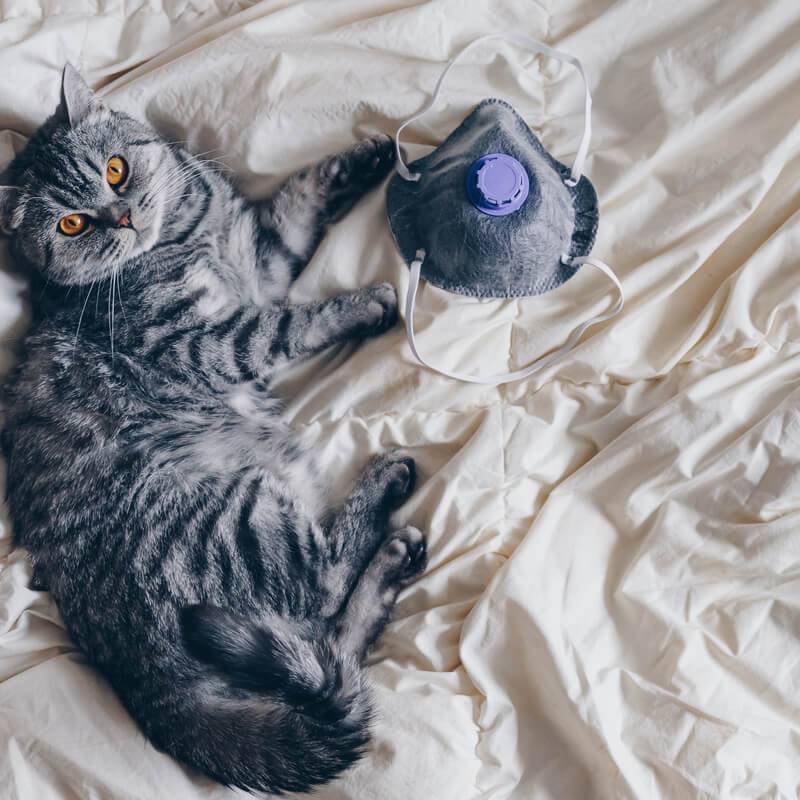
Corticosteroid hormones
They have an anti-inflammatory effect, quickly relieve symptoms, but with prolonged use cause side effects. Glucocorticosteroids (a subclass of corticosteroids) are also used to relieve inflammation in the bronchi and have side effects with long-term use.
Antihistamines
They have an anti-inflammatory effect, reducing the allergic reaction. This group has low efficiency, but causes fewer side effects.
Bronchodilators and hormonal preparations in aerosol forms
According to veterinarians, they are the most effective, because, getting directly into the bronchi, bypassing other organs, they can reduce undesirable consequences. The disadvantage of these dosage forms is that cats perceive aerosols extremely negatively. Therefore, for inhalation, you can use a spacer specially designed for the treatment of cats with a mask, if the pet is more docile and can withstand such a procedure.
Since the treatment of asthma in cats is long, it is necessary to ensure a good clinical effect with minimal doses of the drug, which is achievable with the help of inhalations.
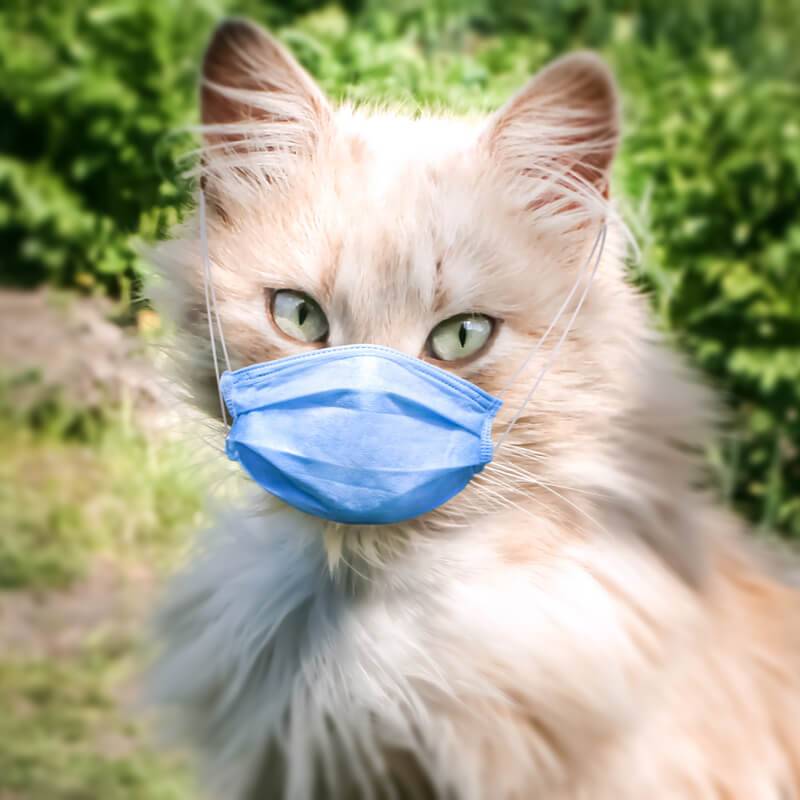
Asthma prevention
Asthma prevention includes a set of preventive measures that every owner must follow, but if a cat or cat is currently being treated for asthma, then the rules should be taken seriously to prevent recurrence of the disease.
Adult cats and cats need to be regularly treated for parasites. Particular attention should be paid to anthelmintic drugs. It is not news that a pet that never visits the street can pick up parasites brought by the owner on shoes. A specific cough can occur in cats due to the various stages of development of helminths in the lungs.
The main principle of prevention is to neutralize the impact of potential allergens. Since it is extremely difficult to identify the allergen, almost all sources of pungent odor and microparticles are under suspicion. These are house dust, pollen from indoor plants, household chemicals, substances with a strong odor, tobacco smoke, plastic or floor coverings. If the cat suddenly showed symptoms of asthma, it is important to carefully evaluate the recent changes in the apartment or house. Perhaps the source is in new items or paint. Household chemicals, paints and varnishes, medicines should be stored in sealed containers and out of reach of cats.
It is necessary to regularly ventilate the room, excluding drafts.
Cleaning with wet products that allow contact with animals is desirable: such products are sold in specialized stores.
It is important to keep the pet’s place clean, regularly clean the cat’s house and the “slide”, using hypoallergenic products for cleaning.
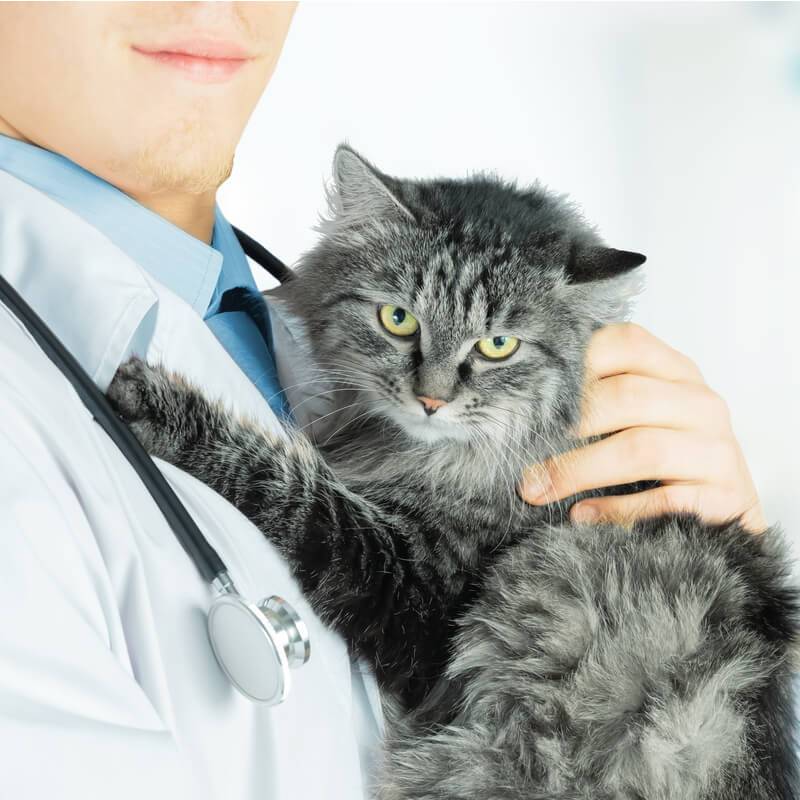
Monitor the cleanliness of the tray and pay attention to the attitude of the pet to the filler.
Minimize stressful situations.
If the cat is still asthmatic, then, not forgetting about the main therapy, physical activity should be excluded, the cat should not be overweight, since obesity contributes to the frequency of attacks. The diet should not contain ingredients that cause allergies. Nutrition should be balanced and saturated with vitamins, for which, on the recommendation of a veterinarian, you can choose a therapeutic food for allergy sufferers that matches the condition of the cat or cat.
Do not smoke or use chemicals with a pungent odor in the room where the pet is located. Always have veterinarian prescriptions and emergency medications to relieve seizures at hand. Modern advances in veterinary medicine make it possible to find the causes of asthma in a cat or cat in order to cure a pet or minimize the consequences of the disease.
The article is not a call to action!
For a more detailed study of the problem, we recommend contacting a specialist.
Ask the vet
19 2020 June
Updated: 21 May 2022




